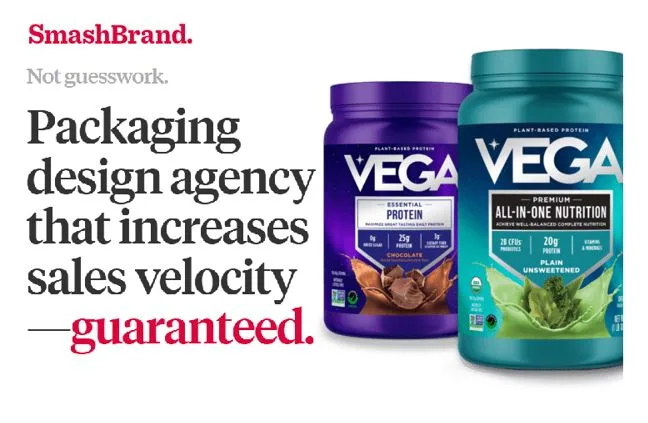From Gut Instinct to Guaranteed Impact: How Data-Driven Packaging Wins in CPG
Why Packaging Performance Can’t Be Left to Opinion
In the world of consumer packaged goods (CPG), packaging isn’t just about aesthetics. It’s a battleground for attention, trust, and purchase. A perfectly crafted product can lose at shelf simply because the packaging doesn’t connect, communicate, or convert. For decades, packaging decisions were largely driven by subjective preference, internal opinion, or creative instinct. But today, the most successful CPG brands are rejecting gut instinct in favor of something far more reliable: data.
In an increasingly competitive landscape, where milliseconds of shopper attention can determine a product’s fate, brands need packaging that not only looks good but proves its effectiveness before it hits the shelf. That’s where data-driven packaging design is transforming how brands launch, reposition, and scale.
The Pitfalls of Traditional Packaging Design
Traditionally, packaging design has followed a simple arc: hire a design agency, review a few creative rounds, and select a final option based on stakeholder feedback. But this approach introduces blind spots that can be costly. Internal biases override consumer behavior. Limited or no real-world testing. Aesthetic choices disconnected from performance outcomes. A long gap between design, insight, and execution. The result is packaging that looks great on a slide deck but fails to perform in the wild where it matters most.
What Data-Driven Design Actually Delivers
Modern CPG brands are demanding more. They’re asking how this packaging will actually perform on shelf, and how do we know? Data-driven packaging design answers that question. Instead of relying on guesswork or creative hunches, this approach uses consumer behavior data, in-market testing, and iterative refinement to ensure the final packaging has the best chance of winning. This doesn’t mean sacrificing creativity. Quite the opposite. It means empowering creative work with the confidence that it’s built on insight, not assumptions.
Key Elements of a Data-Driven Packaging Process
Let’s break down how data informs great packaging decisions.
First is concept testing before creative commitments. Instead of choosing a direction based on mood boards or gut instinct, winning CPG brands test multiple packaging concepts against each other. This gives them quantifiable feedback on which ideas grab attention, communicate benefits clearly, and generate purchase intent.
Next is message hierarchy optimization. Are you leading with the wrong benefit? Are your claims getting lost in the design? Consumer testing can show how people actually scan, interpret, and respond to your pack messaging, letting you revise the copy and layout before printing a single label.
Finally, in-market simulation plays a key role. One of the most powerful techniques is shelf simulation: placing your packaging in a digital or physical environment alongside competitors and measuring real buyer reactions. This reflects actual purchase behavior, not theoretical responses.
A New Standard for CPG Packaging Design
This is where companies like SmashBrand are redefining what it means to design packaging. More than a design agency, SmashBrand is a data-driven brand development firm that integrates consumer testing into every stage of the packaging process, from positioning and naming to structural design and production.
Their approach is built around a key insight: the handoff between strategy, design, research, and production is where most brands lose time, money, and critical knowledge. To solve this, SmashBrand built an integrated team of brand strategists, designers, and researchers, many of whom come from leading CPG companies and global agencies. Their core promise is design that is evidence-based, insight-backed, and built to win with real consumers.
Making Better Decisions with Real Data
Imagine two versions of a new beverage package. Both look sharp. One has a bold color block and minimal copy. The other features a product image and benefit claims. Internal teams are split. One side loves the simplicity. The other wants more storytelling.
With a data-driven approach, there’s no need to guess. A simple round of A/B testing can reveal which version grabs more attention, which one is better understood, and which one triggers more purchase intent. Suddenly, the debate becomes a decision. The result is a package that performs, not just pleases.
Testing Doesn’t Slow Creativity, It Accelerates It
Contrary to what some may assume, data doesn’t slow down the creative process. It speeds it up. By validating ideas early, brands avoid costly revisions later. Packaging doesn’t go to print and fail on the shelf. It launches strong, with fewer pivots required post-launch.
And in CPG, where competition is brutal and retail space is unforgiving, that kind of head start can make the difference between a slow trickle and a velocity breakthrough.
Design and Data Work Best Together
Some in the creative world bristle at the idea of data-driven design, seeing it as a constraint on artistic freedom. But in reality, data is creative fuel. It reveals which messages land, which colors pop, which structures stand out. The best creative teams aren’t replaced by data. They’re guided by it.
That’s the philosophy behind SmashBrand’s work. They believe in distinctive design, but not design for design’s sake. Their focus is on creative expressions that drive objective goals, reinforced by frequent testing that bridges the gap between insight and execution.
You’ll find that reflected across their process, from how they build positioning strategies based on in-market perceptions to how they craft packaging that becomes ownable brand assets, not just wrappers. Their services span brand identity, packaging structure, messaging, in-store marketing, and ecommerce assets, all driven by insight, not assumption.
Why Packaging Must Prove Itself Before It Hits the Shelf
Your product only gets one chance to make a first impression. In a crowded retail aisle or ecommerce scroll, packaging is often the first and only shot at capturing attention and winning trust. At that moment, there’s no time for guesswork.
By embedding consumer validation into every phase of packaging development, brands can launch with confidence, not just creativity.
Final Thought
In a CPG landscape driven by fierce competition and shrinking attention spans, packaging is no longer just a design exercise. It is a performance asset. Every decision, from structure and messaging to shelf presence, should be validated by how real consumers respond. That is the difference between design that merely looks good and design that drives measurable growth.
SmashBrand has built its entire model around this principle. Their approach replaces assumptions with evidence and transforms packaging from a static visual into a dynamic brand tool. Whether a brand is launching from scratch, repositioning, or trying to break through in a crowded category, success depends on a packaging system that is tested, proven, and ready to win.
By fusing strategic insight, creative expertise, and rigorous testing, SmashBrand empowers CPG brands to go to market with packaging that doesn’t just show up. It stands out, speaks clearly, and sells.
To see how data-backed design leads to real-world impact, explore their process and work at SmashBrand.com. Their integrated, insight-led approach is helping today’s most ambitious brands turn packaging into their most reliable growth engine.




